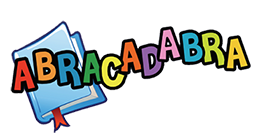Activities: Reading (Fluency)
Expression
Overview
Objective
The computer reads a text using different expressions and the student must decide if the passage was read appropriately. The student must then read the same text practicing correct use of expression.
Facilitation Tips
Before beginning this activity, provide students with examples of expressive reading done well and poorly. For example, explain how a story should be read if a person is happy, sad, surprised, etc. ABRACADABRA does not teach punctuation marks, so you should guide students to pay attention to these marks because they assist in knowing how to read a passage well.
Levels
This activity is appropriate for all reading levels. Even with picture books, reading or speaking with proper expression should be modeled when texts or pictures warrant it. For example, if a fire scene is illustrated, speak about it with some excitement or emotion such as sadness or fear in your voice.
Note
Please note that the LTK+ team has discovered that the segmented version of words that should have a short O, instead use a long O. For example, the word dog is segmented as /d/ /oʊ/ /g/ instead of the proper /dɒg/. We will work to correct this error.
Activity Insights
What is Expression?
Reading with expression is an important component of reading fluency. It helps to convey not only meaning but also the mood in a story. This leads to better understanding or comprehension of the text/story.
Why do students struggle with Expression?
There can be many reasons why students struggle to read with expression. A key reason is that they are having difficulties decoding the words, so they can’t focus on the meaning of the text and how it should be read. Students may also not understand the function of punctuation and its relationship to expression when reading aloud.
How do I further support students?
Students who are struggling to decode words will need more practice with alphabetic activities such as segmenting and blending words. You should also suggest that students use pictures and other visual cues to help with interpreting the text. Students might also benefit from a review of basic punctuation and how its influences spoken language (for example, a voice going up in tone to indicate a question being asked).
Linked Stories
Darryl! Don't Dawdle
Feelings
Henny Penny
I Can Move Like a ...
The Dove and the Ant
The Frogs and the Well
The Little Red Hen
The Three Billy Goats Gruff
Waterfall
When I Open my Eyes
Related Activities
Accuracy
Comprehension Monitoring
Story Elements
Students' Stories
Resources
Activities: Reading (Fluency)
Expression
Objective
The computer reads a text using different expressions and the student must decide if the passage was read appropriately. The student must then read the same text practicing correct use of expression.
Facilitation Tips
Before beginning this activity, provide students with examples of expressive reading done well and poorly. For example, explain how a story should be read if a person is happy, sad, surprised, etc. ABRACADABRA does not teach punctuation marks, so you should guide students to pay attention to these marks because they assist in knowing how to read a passage well.
Levels
This activity is appropriate for all reading levels. Even with picture books, reading or speaking with proper expression should be modeled when texts or pictures warrant it. For example, if a fire scene is illustrated, speak about it with some excitement or emotion such as sadness or fear in your voice.
Note
Please note that the LTK+ team has discovered that the segmented version of words that should have a short O, instead use a long O. For example, the word dog is segmented as /d/ /oʊ/ /g/ instead of the proper /dɒg/. We will work to correct this error.
Insights
What is Expression?
Reading with expression is an important component of reading fluency. It helps to convey not only meaning but also the mood in a story. This leads to better understanding or comprehension of the text/story.
Why do students struggle with Expression?
There can be many reasons why students struggle to read with expression. A key reason is that they are having difficulties decoding the words, so they can’t focus on the meaning of the text and how it should be read. Students may also not understand the function of punctuation and its relationship to expression when reading aloud.
How do I further support students?
Students who are struggling to decode words will need more practice with alphabetic activities such as segmenting and blending words. You should also suggest that students use pictures and other visual cues to help with interpreting the text. Students might also benefit from a review of basic punctuation and how its influences spoken language (for example, a voice going up in tone to indicate a question being asked).
Linked Stories
Darryl! Don't Dawdle
Feelings
Henny Penny
I Can Move Like a ...
The Dove and the Ant
The Frogs and the Well
The Little Red Hen
The Three Billy Goats Gruff
Waterfall
When I Open my Eyes
Related Activities
If you notice your student struggling with this activity, suggest one of the following activities to further practice and reinforce the skill.
Accuracy
Comprehension Monitoring
Story Elements
Students' Stories

